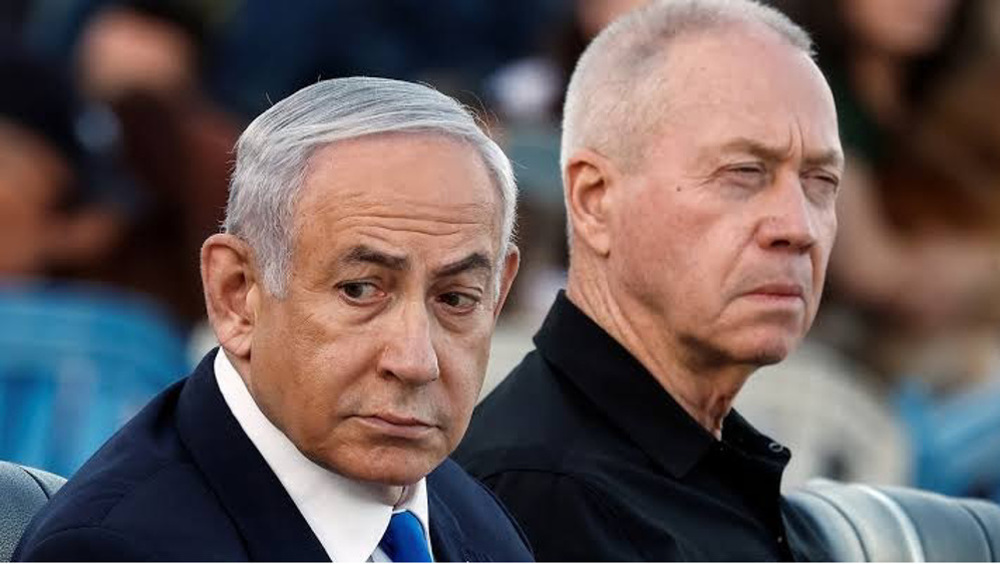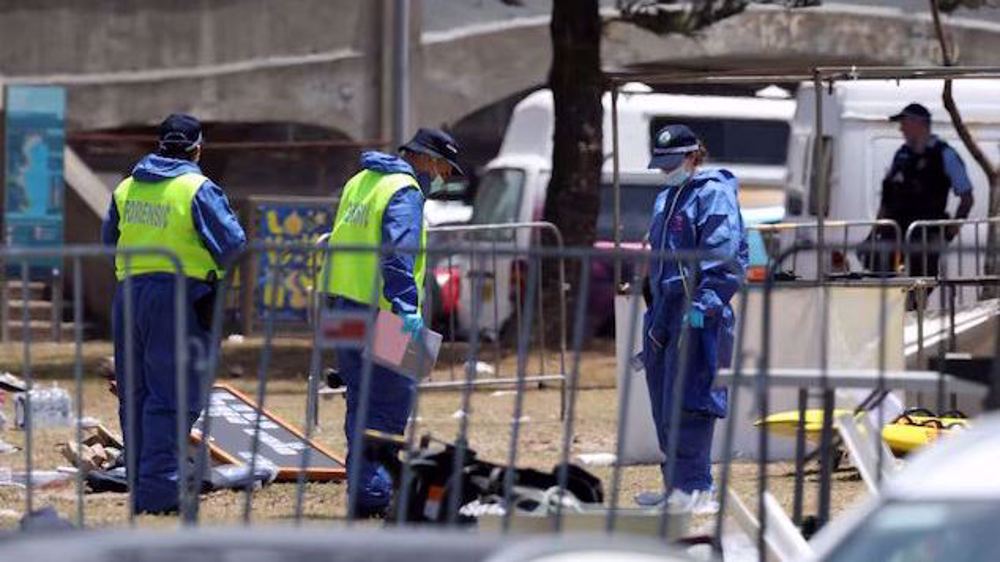Israel unveils US-made advanced F-35 warplanes at air show
Israel has unveiled its F-35 stealth warplanes recently obtained from the United States, a further vivid sign of Washington's full military support of Tel Aviv in its crackdown on the Palestinian people and aggression against neighbors.
Three of the five advanced F-35 multirole jets, purchased last year, appeared for the first time in the skies along the Mediterranean coast and across several cities, including Tel Aviv, during an air show held for the 69 anniversary of the regime's creation, known in Palestine as the Nakba Day (the Day of Catastrophe), on Tuesday.
The occasion marks the anniversary of the forcible eviction of hundreds of thousands of Palestinians from their homeland by Israelis in 1948.
Israel plans to buy a total of 50 F-35 warplanes from their manufacturer, the US-based Lockheed Martin international aerospace company. The Israeli regime, which receives over $3 billion a year in US military aid, is currently in the process of obtaining the first batch of its purchase; 33 F-35 jets at an average price of about $110 million each.
Israel's already-possessed five warplanes are said to become operational this year, and they are the first shipment of these state-of-the-art aircraft outside the United States.
Lockheed Martin has described the F-35 jet as "virtually invisible," a capability that allows the aircraft to evade even the most sophisticated anti-aircraft missile systems.
Critics and human rights groups have already warned that the inclusion of advanced F-35 warplanes will free the regime's hand to further crack down on Palestinian people and worsen their plight. The newly-added military power also enables the Israeli regime to carry out undetected airstrikes and spying operations in neighboring countries, particularly war-torn Syria.
Israeli's latest aerial aggression against Syria occurred on April 21, when the regime's warplanes fired at least two missiles at a military position in the vicinity of Khan Arnabah town in the countryside of Quneitra, the capital city of the southwestern province of Quneitra. In March, Israeli warplanes had also struck several targets in Syria.
Read more:
On April 2, Lebanese Prime Minister Sa’ad Hariri warned that recent Israeli actions had raised the alarm that the Israeli regime had a desire for a new conflict with Lebanon.
His comments came after Israel unveiled the “David’s Sling” missile system at Hatzor air force base in central occupied Palestinian territories.

The Israeli military also frequently bombs the besieged Gaza Strip, with civilians being the main target of such attacks. On March 16, the regime's warplanes carried out several airstrikes on multiple locations throughout the Palestinian enclave.
Read more:
- Israeli warplanes bombard Gaza Strip
- Israeli jets carry out new airstrikes on Gaza Strip, injure four Palestinians
- Israeli fighter jets, tanks carry out airstrikes, artillery shelling against Gaza Strip
Israel has also launched several wars on the Palestinian coastal sliver, the last of which began in early July 2014. The military aggression, which ended on August 26, 2014, killed nearly 2,200 Palestinians. Over 11,100 others were also wounded in the war.
Gaza has been under an Israeli siege since June 2007. The blockade has caused a decline in the standard of living as well as unprecedented levels of unemployment and unrelenting poverty in the coastal enclave.
VIDEO | Press TV's news headlines
Iran FM advises adversaries not to repeat past mistakes
VIDEO | The state of conflict in Ukraine
Venezuela protests to UN Security Council over US seizure of oil tanker
Iran reports sharp rise in household gas demand
OIC chief pledges support for Iran, hails Tehran's role in Islamic solidarity
BBC to fight $10bn Trump lawsuit over Panorama speech edit
Israeli prison chief warns of escalation as Palestinians suffer in detention









 This makes it easy to access the Press TV website
This makes it easy to access the Press TV website